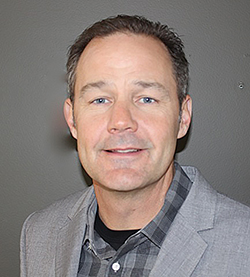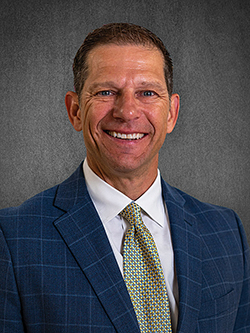
Presented by BUSRide

Moderator
BUSRide convened a discussion moderated by Craig Lentzsch, former CEO of Greyhound Lines; former president / CEO of Coach America; and past executive director of All Aboard America! Holdings.
He and a panel of industry experts explored the latest trends in fleet financing; the new and pre-owned coach markets; different lease types for varying needs; and the industry-wide ramifications of recent bankruptcies and consolidations.
What are the major 2020 trends for motorcoach financing?
Matt Hotchkiss: 2019 was a challenging year in the coach industry for many of our customers and for Wells Fargo. Our bus portfolio showed some moderate signs of stress. Delinquency was higher and the percentage of our customers that were experiencing some type of financial strain was higher than historical averages — probably the highest it has been in the last 15 years. We started to see weakness in financial performance going back to 2018. Higher driver wages — and just wages in general — were an issue going into 2018 and that continued in 2019. The higher wage expense as well as higher insurance costs led to compressed margins and some of the problems we saw.

Senior Vice President, Bus Division Sales Manager
Wells Fargo Equipment Finance
The good news is we don’t see a demand problem for the industry. Revenue has been stable or increasing. Expenses, however, are outpacing those revenue gains. Margin compression is the result as operators try to catch up with rapidly increasing costs. As we look into 2020, our leading concern is the insurance environment and correlating premium hikes. When an operator experiences an immediate and significant hit on a line item like this, it takes them time to adjust charter, and especially contract rates. It is something we are looking at closely. We ask all of our customers when their renewal is and what their expectations are for premium hikes so we can get an understanding on how they are tackling the issue. We have already witnessed some smaller companies go out of business as a result of not being able to get insurance, or just not being able to afford what those increases are.
Gregg Goedde: I want to add that on the insurance side, it is not only a challenge with a limited number of insurance providers, it is also a capacity issue. There is a supply issue, as there is demand for more options. Supply is limited, so the operator is in a situation where prices are going to be increasing. The current providers are also limiting their capacity. For example, an operator’s current insurance provider may only provide a portion of their liability coverage. Maybe $3 million of the minimal $5 million required. The operator now has to find another provider to cover the remaining $2 million of liability insurance.

Senior Vice President
ABC Financial Services
Regarding lending and lenders, competition is always present. What is challenging for operators is finding the right lender. Are they easy to work with? Are they accurate? Do they know the vendors? Can they work with the vendors? Are they doing what they say and saying what they’re doing? Will they help you when needed or when you need a favorable buy out? In 2020, know who you are doing business with!
Tony Pederson: MCI has relationships with the widest range of lending institutions to meet the requirements of our customer base and communicates often on industry trends. We work closely with our lenders and customers, building the kind of trust that sticks when they might be struggling financially; this is part of the relationship we build with our customers.
Possible insurance premium increases are always looming. Each lender we work with is well vetted by us; we understand the detail of their processes, such as pre-payments, so we can match them with the right operator. Ultimately the lender and the operator need to be a good fit.

Regional Manager
MCI Financial Services
David Scoular: Insurance costs are the biggest hurdle coming out of last year and going into this year. I see margins compressing for operators, but that will hopefully begin to stabilize soon.
And looking from the operator side, at least from the simple side, what I see is insurance costs rising. Fuel costs have stabilized for them, but it looks like some of the insurance costs are starting to increase and it takes time to catch up with the increased expense.
Eric Coolbaugh: Access has been in the lending business since 1987, so we have seen decades-long approaches of most banks and how they come and go in the marketplace. Right now, we are seeing a surplus of lenders into the marketplace, some of which do not necessarily know how to do their underwriting.
What I am hearing from our customers, which is typically a high percentage of limousine operators and smaller coach operators, is a steady demand for financing. We are seeing situations where customers are struggling with cashflow as their insurance rates have gone up, sometimes 20% to 50% higher. We are definitely seeing issues with regard to operators’ profit. But for the most part, due to the industry’s consolidation, we are seeing steady demand for coach financing.
“[Finding customers for the influx of repo buses] was the right thing to do, both strategically and for the market, because it helped our financing partners as well.” — David Scoular of Prevost
How would you describe the state of the new and pre-owned coach markets in 2020?

Director of Finance
Prevost
Coolbaugh: We like the new coach bus market, but, quite frankly, it is less than 20 percent of the coaches that we finance for our customer base. In terms of new coaches, we have seen a slight decrease year end 2018 and 2019 because some of the larger campuses in the Bay Area were curtailing their buying, which is fine. They have purchased quite a bit over the last 10 years. We have also seen that the hard insurance market and the relatively small driver pool have our customers reluctant to buy new coaches — because not only do they not know their operating costs with rising insurance, but they also do not know if they can hire qualified drivers to operate the vehicles.
So we have seen a leveling, although I am sure OEMs will say that there was an increase in the last six months of the year of 2019 — but we have seen a steady new coach marketplace. The most concerning challenge to an asset lender like myself and Access is the used coach market. So, by last count, I think there are 650 used coaches in the marketplace that need a home and that pool of homes has been limited by consolidation and barriers to entry for smaller operators. Thus, we have a flood of used coaches in the marketplace, and that is severely hampering the resale value of these coaches, or the perceived resale value. I think that, unfortunately, is going to continue in 2020 and beyond. That is, barring some sort of change, which I do not see coming.

Vice President of Sales / Co-Founder
Access Commercial Capital
Goedde: I am going to take a step back into 2019. I think all manufacturers would agree that new coach sales were down double digits in percentage sales. That was not all bad, as there was probably a need for the market to slow down as a result of the amount of pre-owned equipment in the market.
With consolidation, consolidators take over the companies that used to buy the pre-owned buses. It is an interesting tug of war in the pre-owned coach market. Buyers for pre-owned equipment are decreasing as a result of consolidation, yet, new coach buyers still expect top dollar on trades for new equipment. In addition, as Eric [Coolbaugh] stated, over the last 24 months there has been a large supply of pre-owned coaches with large companies going out of business. It flooded the pre-owned market. As a result, all vendors are a little heavy in the pre-owned inventory side. As a result, prices are being compromised.
Scoular: Well as Gregg [Goedde] mentioned, there is plenty of supply. And I am sure Tony [Pederson] has had probably somewhat similar conversations. Used coaches are in good supply, unfortunately. I think operators are trying to just find the easiest way, and maybe not the most cost-efficient way, to get out of the old coaches. But I also think the used market is not as strong and robust as it used to be, because of barriers to entry for smaller operators. Those guys are getting squeezed out by barriers to entry from government regulations and insurance. It is causing pain in the pre-owned used coach market.
One of our concerns is how it affects the new coach market. 2019 was soft, and I expect 2020 to be leveled off in new coach sales, but we shall see.
Pederson: I know that the inventories for pre-owned coaches are probably a little bit heavier than each of the vendors prefer. And some of that is competition against non-traditional sellers. Some of our market inventories are due to companies that have gone out of business and are now having to be sold through non-traditional channels such as at auction or lower-value repo sales. These types of sales are by sellers that are highly motivated to move the metal quickly, so they can get back into balance and normal business again. It has been tough to compete against that, but it seems to be going away, so hopefully that means without having these huge numbers out there MCI and ABC and Prevost can go back to regular business of selling our assets against each other.
Another thing to note is that customers primarily buying pre-owned coaches tend to be smaller operators. Some have gone out of business, which placed more used equipment in the market. Some of them went away through consolidation. Some went away just because of the struggles they had with ELDs, the driver shortage and even lack of succession planning. As such, this segment of the market has shrunk.
“Across the industry, ABC has the widest array of financing options and lease types to help our customers get the coach they need.” — Gregg Goedde of ABC Financial Services
How important is lease financing to your customer base? Please define and explain the importance for different lease types for varying needs.
Goedde: Being a captive lender with our own portfolio, we have the opportunity to do a variety of leases. Across the industry, ABC has the widest array of financing options and lease types to help our customers get the coach they need.
One of the greatest benefits, regardless of what lease we do, is the tax implication. For example, a majority of our motorcoach funding in Florida consists of leases. That is a result of Florida customers paying rental tax rather than having to come up with large amount of sales tax up-front. That helps operators budget the tax payments and pay as they go rather than all upfront. That helps us provide equipment in taxable states.
As the year goes on, lease customers have a bigger and bigger tax benefit in terms of their rates. As a result, at the end of the year, there may be a full percentage point difference in the interest rate between a lease and a loan. This helps the customer get to that next level of equipment as a result of being able to utilize a lease rate to reduce their monthly payment.
Pederson: When we are communicating with one of our customers, we ask about what their needs are financially. But I always end my conversation with, “Best to ask your accountant or tax provider what you really need.”
Sometimes with a TRAC lease, it comes down to the actual ease of how the owner-operator is going to account for it. Sometimes it just comes down to the ease of the actual underwriting. Many owner-operators have a smaller fleet and they only do their financials once a year, so it is probably one of the easier write-offs for them, because many of them just write off the lease expense.
Coolbaugh: Cashflow is king in not only the new coach business, but the used coach business — and pretty much the transportation business in general. Our typical structure on new coaches is 84 to a 20, whether it be a lease or a loan. The actual leasing side of it is more of a tax question to the Independent Operators Finance Department. Some can use depreciation; some do not need it.
It is not about owning an asset anymore and having equity at the end of your term. It is basically utilizing an asset that is appropriate in today’s marketplace with your customer base and then trading out of it when you need to get something new.
“When we are communicating with one of our customers, we always ask about what their needs are financially.” — Tony Pederson of MCI Financial Services
Scoular: We did numerous operating leases last year to customers who had specific contracts for specific coach needs. The coaches are tied to a contract for three to five years, and we set them up with operating lease situations.
So, the leasing component is always out there. And now the new rules, I mean 90% to 95% of our companies are still privately held. So gap rules and all those kind of rules, everything is on the balance sheet anyways. But that is not what drives them. What really drives them is trying match up cash flows, contracts and so on. Just as the school bus world will do.
Hotchkiss: My answer to this question is the same every year. Our lending is a fairly consistent mix of TRAC leases and loans. Customers that want to maximize and accelerate their tax write-off prefer a loan. Customers that want the lowest interest rate and payments favor a TRAC lease. Fair market value leases is the third type of product out there, which allows the operator to return the equipment at the end of term. With the current condition of the used coach market, that may be a product that is more difficult to find these days.
How has consolidation and bankruptcy affected the industry’s health today?
Scoular: We were hammered by the influx of repo coaches on the market. And while we were able to pass them on to customers, it probably cost us some sales on the new-coach market. We probably took buyers out of the new market and sold them some repos that were in pretty good shape. It was the right thing to do, both strategically and for the market, because it helped our financing partners as well.
Consolidations are going to affect us. You just never know who is buying who and what they want to do; if they want to run a mixed fleet or just a single brand fleet. It is a trend that seems to be picking up again, which will certainly affect the overall health of the industry until there’s a clear picture of what the final outcome looks like after the purchase/consolidation is completed.
Hotchkiss: As far as the health of operators, I do not think consolidation has had a negative impact on how operators perform. If anything, when you consolidate the number of companies out there, that should create some more discipline in pricing in most markets.
From our perspective as a lender, however, industry consolidation decreases the universe of potential Wells Fargo customers. Because we have been lenders in this industry for so long, the entity that is being acquired is often a current customer. Usually we lose that customer because we are often not lending to the surviving company. Collectively over the last five years, we have probably lost 20% of our new business origination because of the consolidation that is going on in the market. It’s clearly an important market dynamic for us.
Coolbaugh: Our industry, already with a glut of used coaches, did not need four consecutive bankruptcies over a course of 18 months — but they happened. The first few auctions were not as disruptive as expected, but subsequent auctions have taken a struggling used coach market and hit it even harder, by not only introducing more supply, but reducing the overall sales prices in that supply. It has had a profound impact on the industry and I would hope to not see more of that in the future.
To read even more of this in-depth conversation, please visit www.busride.com/ebooks and read the BUSRide Annual Fleet Finance Summit 2020 eBook.
